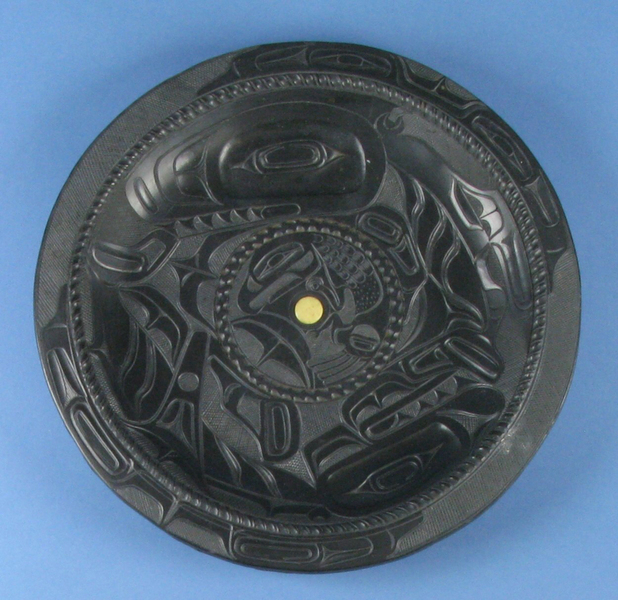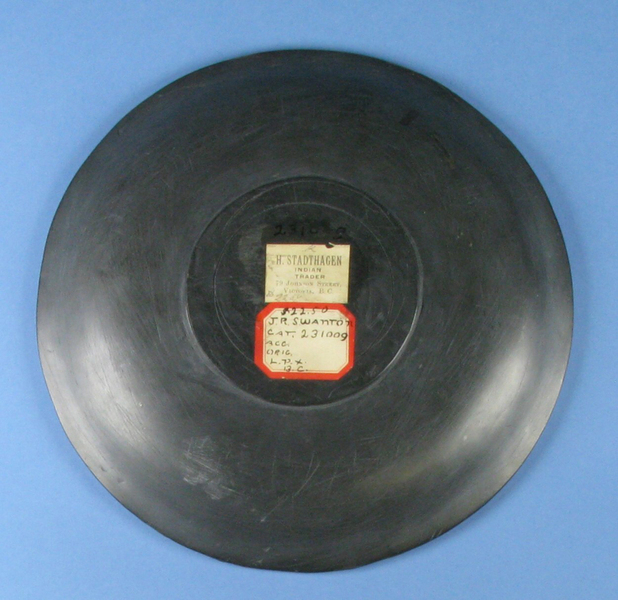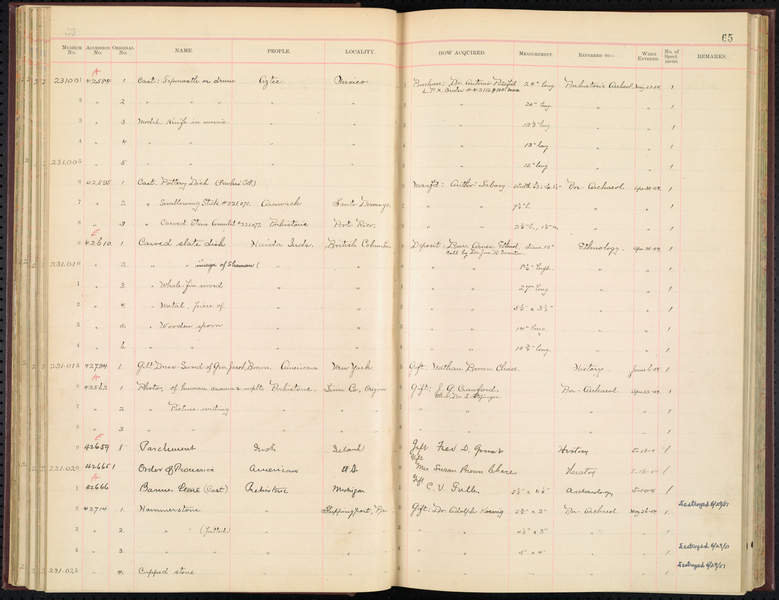Carved Slate Dish Item Number: E231009-0 from the National Museum of Natural History







Notes
From card: "Shallow dish with inner surface covered with mythological carvings in low relief. Displaying great skill and execution of a good design. The dish was formed on a lathe. Purchased from H. Stadthagen (Indian Trader), 79 Johnson St., Victoria, B.C. $22.50."Label glued on back of artifact has this information: "H. Stadthagen, Indian Trader, 79 Johnson Street, Victoria, B.C. $22.50."Comment from Graduate Student Research Paper, "A Report on Accession #42610 of the National Museum of Natural History", written by Athena Hsieh in April 2012, for the class "Anthropology in the Museum" taught by NMNH Curator, Dr. J. Daniel Rogers for the George Washington University. Approved for inclusion into notes by Dr. Igor Krupnik. Dr. Krupnik and NMNH has not verified the contents of the comment below, and suggests future researchers verify the remarks before citing Ms. Hsieh. The complete paper is attached to the accession record of this object in EMu. "The specific type of slate is called black silt argillite. Argillite is rare, and is found in Slatechuck Mountain on Graham Island, and only certain individuals were allowed the right to remove material from the quarry. That the artist was able to use argillite at all is an indication of his status. The southern Haida, especially those from Skidegate, were known amongst traders for their argillite plates with abalone shell inlay, which were then polished with dried sharkskin (Van Den Brink 1974, 74). The plate contains images of killer whales and a raven. H. Stadthagen was known as “The Indian Trader” who advertised in the local paper as a seller of “Indian Curios” (Victoria Daily Columnist 1902, 7). ... Though any records on Stadthagen and his business were not found, the maker of the plate might become known if Stadthagen's transactions are preserved. What can be inferred from the carvings on the plate is that it was likely carved by an individual of the Eagle moiety, since an image of the bird appears in the center of the plate, flanked by two killer whales. There is a possibility that this may be the work of Charles Edensaw, who was of the Eagle lineage. Citations Van Den Brink, J. H. 1974. The Haida Indians: Cultural Change mainly between 1876-1970. Leiden: E. J. Brill. Victoria Daily Columnist “Classified Advertisements.” February 19, 1902."
Item History
- Made in British Columbia, Canada
- Collected by Dr. John R. Swanton in British Columbia, Canada
- Received from Bureau Of American Ethnology on April 23, 1904
What
- Name
- Carved Slate Dish
- Identification Number
- E231009-0
- Type of Item
- dish
Who
- Culture
- Haida
- Field Collector
- Dr. John R. Swanton
- Received from
- Bureau Of American Ethnology
Where
- Holding Institution
- National Museum of Natural History
- Made in
- British Columbia, Canada
- Collected in
- British Columbia, Canada
When
- Acquisition Date
- on April 23, 1904
Other
- Accession Number
- 042610